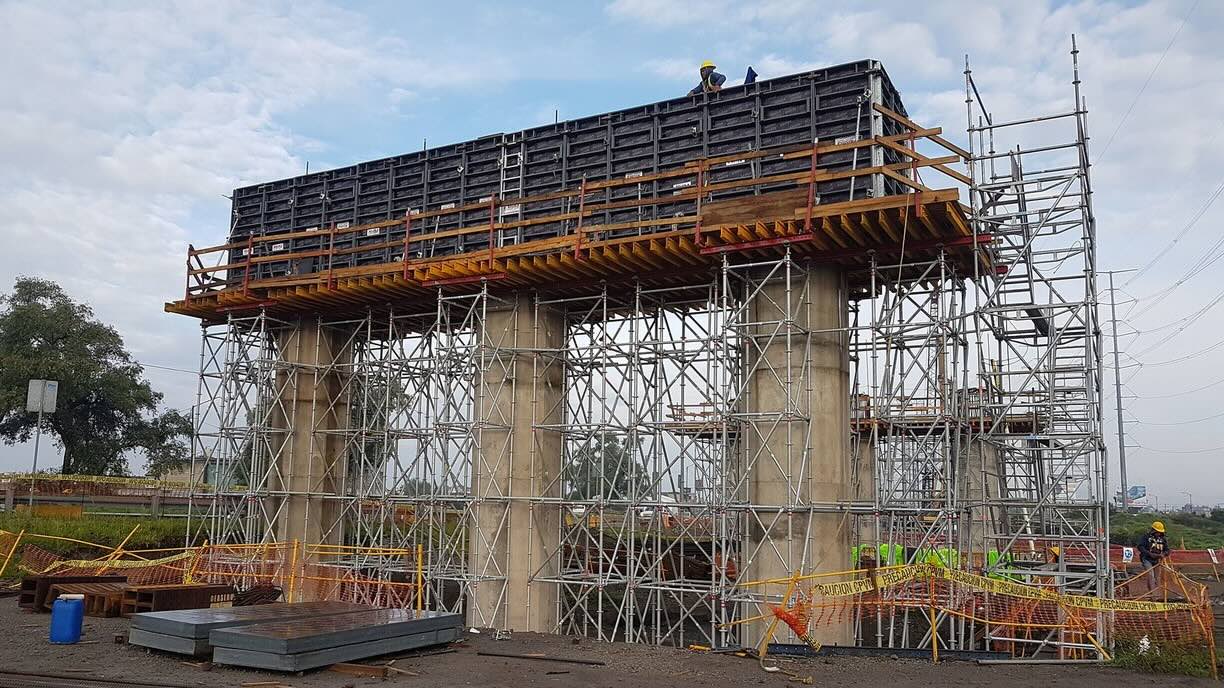Home>diy>Building & Construction>What Is An LOI In Construction


Building & Construction
What Is An LOI In Construction
Modified: January 9, 2024
Learn what an LOI is in construction and how it can benefit your building construction projects. Discover its significance in project planning and execution.
(Many of the links in this article redirect to a specific reviewed product. Your purchase of these products through affiliate links helps to generate commission for Storables.com, at no extra cost. Learn more)
Introduction
Welcome to the world of construction, where meticulous planning and careful communication are essential for successful projects. In this dynamic industry, it is crucial to have a clear understanding of various documents and processes to ensure smooth operations and minimize conflicts.
One such document that plays a significant role in construction projects is an LOI, which stands for Letter of Intent. In this article, we will delve into the details of LOIs in construction, exploring their definition, purpose, key elements, benefits, limitations, and examples.
Whether you are a seasoned industry professional or a newcomer to the construction field, understanding the importance of an LOI can significantly impact your project’s success. So, let’s dive in and unravel the mysteries of LOIs in construction.
Key Takeaways:
- LOIs in construction serve as a crucial preliminary agreement, expressing intent and outlining basic terms, facilitating early project initiation, flexibility in negotiations, and securing financing and partnerships.
- While LOIs offer benefits such as rapid communication and risk mitigation, their non-binding nature and potential for misinterpretation require careful drafting and legal review for effective utilization in construction projects.
Read more: What Is Construction
Definition of LOI in Construction
Before we proceed, let’s clarify what an LOI actually is in the context of construction. An LOI, or Letter of Intent, is a document that outlines the preliminary agreement or understanding between two parties involved in a construction project. It serves as a written declaration stating the intention to enter into a contract or formal agreement in the future.
The LOI is often used when the parties involved want to express their commitment to move forward with the project but have not yet finalized all the details or terms of the contract. While the LOI is not a legally binding document like a contract, it sets the framework and acts as a guide for further negotiations and finalization of the formal agreement.
In the construction industry, the LOI typically comes into play during the pre-construction phase when the parties involved want to initiate the project without delay. It can be used to secure financing, initiate site preparations, and start procurement activities while the formal contract is being negotiated.
It’s important to note that an LOI is not a substitute for a formal contract. It is a preliminary document that outlines the intentions and understanding of the parties involved. The final contract, which contains detailed specifications, terms, and conditions, will supersede the LOI once it is executed.
Now that we understand the definition of an LOI in construction, let’s explore its purpose and why it is commonly used in the industry.
Purpose of LOI in Construction
The primary purpose of an LOI in construction is to establish a framework and demonstrate the commitment of the parties involved to move forward with the project. It serves as a formal declaration of intent, outlining the general terms and conditions of the anticipated contract. Here are some key purposes of using an LOI in construction:
- Expressing Intent: An LOI allows the parties to clearly convey their intention to proceed with the construction project. It demonstrates a commitment to collaborate and work towards a mutual goal.
- Initiating Pre-construction Activities: By using an LOI, the parties can start essential pre-construction activities such as site preparation, securing permits, and initiating procurement processes. This helps to expedite the project and avoid unnecessary delays.
- Securing Financing: In many cases, securing financing for a construction project may require proof of intent. An LOI provides assurance to lenders and investors that the project is moving forward and increases the chances of securing necessary funds.
- Guiding Negotiations: An LOI serves as a starting point for further negotiations. It outlines the general terms and conditions that the parties agree upon, providing a baseline for discussing and finalizing the formal contract.
- Establishing Good Faith: By signing an LOI, the parties demonstrate their willingness to work together in good faith. It establishes trust and builds a positive working relationship between the involved parties.
It’s important to note that while an LOI carries weight and significance, it is not legally binding like a contract. The final agreement will be embodied in the formal contract once it is executed. Nonetheless, the LOI serves as an essential step in the construction process, smoothing the way for further negotiations and formalizing the contractual terms.
Now that we understand the purpose of an LOI in construction, let’s explore the key elements that are typically included in an LOI document.
Key Elements of an LOI
When drafting an LOI in construction, certain key elements should be included to ensure clarity and prevent misunderstandings. While the specific details may vary depending on the project and the parties involved, here are the essential elements typically found in an LOI:
- Parties Involved: The LOI should clearly identify the parties who are expressing their intent to enter into a future contract. This includes the names and contact information of the parties, such as the owner/client and the contractor.
- Project Description: A brief description of the construction project should be provided, including the scope, location, and any significant details that help to identify the project.
- Preliminary Terms and Conditions: The LOI should outline the preliminary terms and conditions that the parties agree upon. This may include the estimated project cost, payment terms, project timeline, and any specific requirements or provisions related to the project.
- Confidentiality and Non-Disclosure: If necessary, the LOI may include clauses regarding the confidentiality of project information and non-disclosure of sensitive data to protect the interests of both parties.
- Exclusive Negotiation: In some cases, an LOI may include a provision stating that the parties agree to negotiate exclusively with each other for a specified period of time. This prevents either party from seeking or entering into agreements with other potential partners.
- Termination Clause: It is important to include a termination clause in the LOI that outlines the circumstances under which either party can terminate the LOI. This provides a clear understanding of the conditions that may lead to the termination of the preliminary agreement.
- Signatures and Date: Lastly, the LOI should be signed by both parties involved to indicate their agreement and commitment. Including the date of execution helps establish a timeline for the project.
These key elements ensure that the LOI provides a comprehensive overview of the intent and initial agreement between the parties. However, it is important to consult legal professionals to tailor the LOI to the specific requirements of the project and ensure its effectiveness.
Now that we understand the key elements of an LOI, let’s explore the benefits of using an LOI in the construction industry.
When writing an LOI in construction, be sure to clearly outline the scope of work, timeline, and any conditions or contingencies. It’s important to be as detailed and specific as possible to avoid misunderstandings.
Benefits of Using an LOI in Construction
Using an LOI in the construction industry offers several benefits that contribute to the smooth and efficient progression of projects. Here are some key advantages of using an LOI:
- Early Project Initiation: An LOI allows for the early initiation of crucial activities such as site preparation, obtaining permits, and mobilizing resources. This can significantly reduce project timelines and start the construction process promptly.
- Flexibility in Negotiations: The preliminary terms and conditions outlined in the LOI provide a starting point for negotiations. This allows the parties to have open discussions and make adjustments before finalizing the formal contract. It provides flexibility and saves time by avoiding prolonged negotiations from scratch.
- Rapid Communication: By using an LOI, the intentions and basic project details are effectively communicated between the parties involved. This leads to clear understanding and reduces potential misunderstandings or miscommunication that may arise during the project’s early stages.
- Securing Financing and Partnerships: An LOI demonstrates serious commitment to the project, which can enhance the chances of securing financing and attracting potential partnerships. Lenders and investors are more likely to support a project backed by a strong and official declaration of intent.
- Early Risk Mitigation: The LOI enables early identification and mitigation of potential risks. By initiating the project’s pre-construction activities, parties can address and resolve any unforeseen issues or challenges early on, increasing the overall project’s success rate.
- Building Trust and Collaboration: An LOI fosters a sense of trust and collaboration between the parties involved. It establishes a foundation of mutual understanding and goodwill, setting the stage for a productive working relationship throughout the project duration.
- Legal Protection and Clarity: While an LOI is not a legally binding document, it provides a level of protection by outlining the preliminary terms and conditions agreed upon by the parties. It offers clarity and reduces the chances of disputes or misunderstandings during the project’s early stages.
These benefits highlight the value and significance of using an LOI in the construction industry. However, it is important to note that an LOI should be carefully drafted and reviewed by legal professionals to ensure its effectiveness and alignment with each party’s interests. It should also be noted that an LOI has limitations that should be taken into consideration.
Now, let’s explore the limitations of using an LOI in construction.
Read more: What Is Retrofit In Construction
Limitations of using an LOI in Construction
While an LOI is a useful tool in the construction industry, it also has certain limitations that should be considered. Here are some key limitations of using an LOI in construction:
- Non-binding Nature: One of the main limitations of an LOI is that it is not legally binding like a formal contract. It is important to recognize that the LOI is a preliminary document that expresses intent and outlines basic terms, but it does not provide the full legal protections and obligations of a formal agreement.
- Uncertainty of Final Terms: As an LOI is typically used during the early stages of a project, there may be uncertainties regarding the final terms and conditions of the formal contract. This can lead to negotiations and potential changes in the project scope, timeline, or costs, which may cause delays or disagreements.
- Potential for Misinterpretation: The language used in an LOI can sometimes be open to interpretation, leading to misunderstandings between the parties involved. It is crucial to be clear and concise in the LOI to mitigate any potential misinterpretations that might arise.
- Lack of Specificity: An LOI may lack the specific details and comprehensive provisions that a formal contract provides. It is important to carefully draft and review the LOI to ensure that it sufficiently covers the key terms and conditions that need to be addressed.
- Limited Legal Recourse: Since an LOI is not legally binding, it may provide limited legal recourse in case of disputes or breaches. This emphasizes the importance of having a formal contract in place to protect the interests of the parties involved.
- Dependency on Good Faith: An LOI relies heavily on the good faith and trust between the parties. While it sets the framework for further negotiations, it requires both parties to act in good faith to ensure a successful project outcome.
Despite these limitations, using an LOI in construction projects can still be beneficial when utilized appropriately. It is crucial to consult legal professionals who specialize in construction contracts to ensure that the LOI is properly drafted and aligned with the project’s specific requirements.
Now that we have examined the limitations of using an LOI, let’s take a look at some examples of LOIs in construction.
Examples of LOIs in Construction
In the construction industry, LOIs are commonly used to establish intent and initiate projects. Let’s explore a few examples of how LOIs are utilized:
- Project Financing: A developer seeking financing for a construction project may submit an LOI to a potential lender, expressing their intent to move forward with the project. This demonstrates the developer’s commitment and provides a basis for further discussions regarding loan terms and conditions.
- Joint Venture Partnership: When two or more parties decide to collaborate on a construction project, they may enter into an LOI to formalize their partnership. The LOI will outline the general terms of the collaboration, such as profit-sharing, responsibilities, and overall project objectives.
- Supplier Agreement: A construction contractor may send an LOI to a supplier, expressing their intent to enter into a formal supply agreement. This allows the contractor to secure the necessary materials and equipment for the project while finalizing the exact terms and conditions in the formal contract.
- Subcontractor Engagement: When a general contractor intends to engage a subcontractor for a specific scope of work, they may issue an LOI to the subcontractor. This initial agreement ensures that the subcontractor initiates necessary preparations and commits to the project while the formal subcontract agreement is being finalized.
- Land Acquisition: In cases where developers intend to acquire land for a construction project, they may submit an LOI to the landowner expressing their intent to purchase the land. This sets the stage for negotiations and due diligence while preventing the landowner from engaging in discussions with other potential buyers.
These are just a few examples of how LOIs are used in various scenarios within the construction industry. The specific content and terms of an LOI may vary based on the unique circumstances of each project and the parties involved.
It is important to note that when using an LOI, it is advisable to involve legal professionals and ensure that the document accurately reflects the intentions and expectations of both parties. This will help to mitigate any potential issues or disputes that may arise during the project.
Now that we have explored various examples of LOIs in construction, let’s summarize the key points discussed in this article.
Conclusion
In the complex world of construction, the Letter of Intent (LOI) plays a crucial role in initiating and formalizing projects. Serving as a preliminary agreement, the LOI expresses intent, outlines basic terms, and provides a solid foundation for further negotiations and the eventual execution of a formal contract.
We have explored the definition of an LOI in construction and its purpose. We discussed the key elements that should be included in an LOI, such as the parties involved, project description, preliminary terms and conditions, and signatures. Additionally, we highlighted the benefits of using an LOI, including early project initiation, flexibility in negotiations, rapid communication, and securing financing and partnerships.
We also acknowledged the limitations of using an LOI, such as its non-binding nature, potential for misinterpretation, and lack of specificity compared to a formal contract. Despite these limitations, an LOI can still be a valuable tool when used appropriately and in conjunction with legal guidance.
Furthermore, we explored examples of how LOIs are commonly utilized in the construction industry. From project financing and joint venture partnerships to supplier agreements and subcontractor engagements, LOIs provide a framework for collaboration and facilitate the smooth progression of projects.
It is important to note that an LOI should always be carefully drafted and reviewed by legal professionals to ensure that it meets the specific requirements of each project and protects the interests of all parties involved.
In conclusion, understanding the importance of an LOI in construction enables industry professionals to effectively navigate project initiation, negotiation, and collaboration. By utilizing an LOI, construction projects are set on the right path, ensuring clear communication, establishing commitments, and reducing potential conflicts.
So, the next time you embark on a construction venture, remember the significance of an LOI and the role it plays in laying the groundwork for a successful project.
Frequently Asked Questions about What Is An LOI In Construction
Was this page helpful?
At Storables.com, we guarantee accurate and reliable information. Our content, validated by Expert Board Contributors, is crafted following stringent Editorial Policies. We're committed to providing you with well-researched, expert-backed insights for all your informational needs.















0 thoughts on “What Is An LOI In Construction”